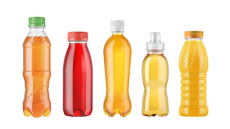HelloFresh results illustrate meal-kit sector’s still-huge room for growth

The Berlin-based company, which operates in the UK, US, Germany, the Netherlands, Belgium, Luxembourg, Australia, Austria, Switzerland, Canada, New Zealand, Sweden, France and Denmark, beat expectations and recorded a record turnover of 1.56 billion euros in the second quarter even as pandemic-related restrictions eased in many countries.
The company received almost 31 million orders between April and June, representing an increase of 71.2 % year-on-year and said it will continue to invest heavily in increasing its production capacity in the coming months.
HelloFresh upgraded its full-year forecasts as a result of its stronger-than-expected first half of 2021. The company now expects revenue to increase by between 45% and 55%.
However, the company downgraded its margin forecasts on higher costs. HelloFresh is speeding up hiring in technology and data roles to cope with the increase in demand, which will squeeze margins, it said.
“The second quarter of 2021 has been a strong success for HelloFresh. We delivered very meaningful growth across both segments, despite a tough benchmark, given that Q2 2020 was probably the peak lock-down quarter,” said Dominik Richter, co-founder and CEO of HelloFresh. In the second quarter HelloFresh launched in Norway and unveiled Green Chef as an additional brand to the UK market.
“We are laying the foundations for reaching our mid-term revenue target of €10 billion revenue and charging towards becoming the leading global food solutions group,” continued Richter.
Equity analysts were encouraged by the results. “Given that we expected initially that Q2 could be a flat quarter for customer additions after the ~2m new customers added in Q1, this is a very good performance,” wrote Deutsche Bank research analysts Nizla Naizer and Silvia Cuneo in a note to investors. They were impressed by HelloFresh’s order rates. These dropped to 4.0 per person in the second quarter of this year compared to 4.3 in the same period of 2020, but ‘performed better than expected’, the analysts said.
The team of analysts at investment bank Berenberg noted that HelloFresh's 'strong demand continues unabated'. "We still believe that the main driver of growth for the business has been structural, rather than COVID-19-related panic buying, as some suggest, and consider our view validated by the fact that demand has remained strong despite the relaxation of restrictions on dining out and physical grocery shopping. Indeed, the fact that management has accelerated not once but twice its capacity-expansion plans suggests that it expects growth to be stronger than originally anticipated," they wrote. They added the front-loaded investment may weigh on margins in the near term, but they view it as enabling the company to capture more growth, more quickly. "We think new revenue guidance is still conservative," they wrote. "Not only are customers growing strongly, they are also spending more with HelloFresh."
HelloFresh meal kits come with pre-packaged fresh ingredients and cooking instructions and take typically 30 minutes to prepare. The company also reported on average bigger basket sizes and higher contribution from add-ons across geographies compared to pre-Covid levels.
'Prepare for changed consumer meal preparation habits'
When HelloFresh revealed its results last quarter, Anne-Véronique Benoist, Head of Insight in the Media Division of market researcher Kantar, told FoodNavigator the huge increase in engagement with meal kits may be the precursor to significant growth in this sector against a backdrop of changed consumer meal preparation habits as we emerge from lockdown.
She added that consumers have embraced scratch cooking from home and say it's something they want to do more. But fatigue is setting in, she noted, a trend which will help meal kit providers as the business model provides consumers “the joy of cooking but not the hassle of sourcing and shopping”.
Further, delivery kits offer a solution to food waste (but not necessarily packaging) giving shoppers the variety they currently crave. "It seems to be as though food is a bit like your holiday. We can’t really go for exotic holidays so we’re using food as way to escape. Any brand that can help us with new recipes is really going to tap into that thirst for variety and more exploration."
Meal kits can further help boost the cooking skills of those consumers who want to cook from scratch but lack the confidence to do so. They also removed the stress for consumers of deciding what meals to prepare each week, she added.





























